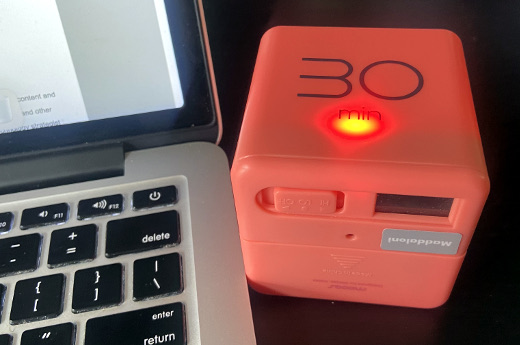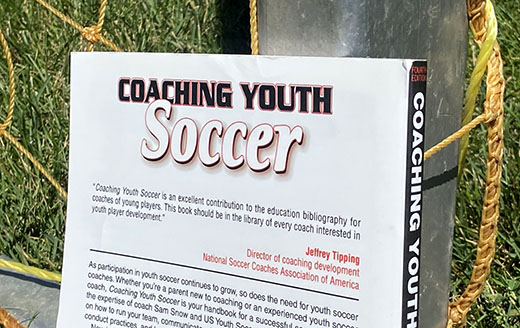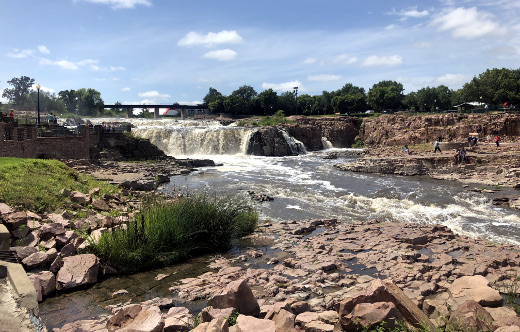Remembering A Toast To The Queen

Recently I began recalling thoughts and taking notes to write on a series of events that, though they happened over 2 decades ago, I remember fondly today. In 2000 and 2001 as President of the Boston Jaycees I was involved with a partnership between my Boston chapter and the Belfast Jaycees in Northern Ireland. These events included hosting a delegation from Belfast in Boston, and being part of the delegation from Boston who went to Belfast. To say it was a truly unique experience is an understatement.
One experience of my trip to Belfast came to mind in the last week when word that the United Kingdom’s Queen Elizabeth II died. As guests in Belfast, we were invited to the Jaycees’ President’s Banquet, a black-tie affair at Belfast City Hall, which was the setting of this particular flashback.
Something I was told of before arriving in Belfast was the formality that surrounded people in leadership positions. As I was the “president” I was to expect heightened attention and ceremony that there goes with the role. What I experienced was something outside of what an average American would observe, even someone in a leadership role. At the Banquet, I was piped (as in bag pipes) into the hall in a procession and sat at the head table along with Belfast’s Lord Mayor and other leaders of the Belfast Jaycees and dignitaries. If only there was video of this.
As I sat down at my appointed seat, I was made aware of the various drinks in front of me and told not to drink them until the proper time. The menu for the event listed the toasts of the evening that had a corresponding drink to go with it.
One of the toasts listed was “a Toast to Her Majesty the Queen” as shown above from the original menu. Upon seeing this, I figured this would likely be a grand toast, even in the capital of Northern Ireland, which was just a few years into the peace as agreed to in the Good Friday Agreement. Of all the toasts, this was one I was most looking forward to... even more than the toast I myself would be giving afterwards.
When the time came for the Toast to the Queen, a past President of the Belfast Jaycees went to the podium. As he approached the microphone and hoisted his glass, I watched with eagerness as he started to speak the words of the toast:
“To the Queen!”
And that was all he said. Three words, followed by a drink and a round of applause. That was it. Next on to me.
I recall leaning over to the person next to me and saying, “that’s it?” to which she laughed. With all of the pomp and circumstance that I experienced in the short week I was in Belfast, this paled in comparison to it. But that’s all it was, and if anything, it saved room for my toast which I was told was a tad longer than what is standard.
As across the pond from me the life of Queen Elizabeth II is being celebrated along with all the drama of her heirs accompanying it, I raise the cup of dark roast coffee with whole milk I am drinking as I write this, thinking about my time in her kingdom, and say a humble, “to the Queen!”
This is from The Hot Iron, a journal on business and technology by Mike Maddaloni.
Did you enjoy this? Subscribe to The Hot Iron by RSS/XML feed or Read by Email
Diversions • (0) Comments • PermalinkMy Latest Productivity and Awareness Hack

If you peruse the pages of this humble blog you will find many posts where I share things I do to keep productive. A couple that come to mind are 30h30d and using Kanban boards. Where some of these approaches have come and gone, some have remained, along with my on-going interest in discovering others.
My latest “hack” if you will has been one I have been using for a few months now and with some success. Unlike others, this one is three-dimensional and requires batteries. It’s a timer cube, as pictured above.
Simplicity In Its Solution
The cube is a straightforward device – turn it on and flip the cube until a desired time is facing up. A red light will start flashing indicating the clock is running. When the selected time is up the cube starts beeping and can be stopped by turning it off. It’s that simple.
So why would I want this? When I first learned of it, I saw one benefit right away in helping me focus for a fixed period. A “trait” of mine I am not totally fond of is that I can start in on a task and be heads-down on it, not realizing hours have passed by. Where it is good that I can concentrate on something, I can end up doing so for too long and thus not managing my time wisely. The cube has been helpful in this regard. For example, if I am not sure of how to solve something I will set the cube to 30 minutes and dive in. When the alarm goes off, I can decide to stop where I am, continue or move on to something else.
An added benefit I quickly discovered is it also reminds me to not sit on my butt all day and move around! I typically set it at 30 minutes, then when the alarm goes off, I will save where I am and take a short walk around the block. As a result my joints don’t completely seize up from prolonged inactivity, plus I have the walk to help clear my head. During these walks I have often come up with ideas I didn’t think of when I was staring at the screen or other inspirations. This 5-10 minute break literally gets the blood pumping, especially to my brain, and I am then ready to take on my next 30-minute sprint.
With one device about 2 inches square, I have helped myself keep focused with a little exercise to boot.
But Don’t You Have a Timer on Your Phone?
Upon being questioned by someone who observed the cube on my desk and asking why I bought this little plastic cube when I have a timer on my phone, my answer was simple, “exactly!” My mobile device has had its own positive impact on my productivity (namely with apps that let me use it as a second computer) but it also can be a distraction. From texts from friends and family to email alerts to the latest transactions from the New England Patriots apps and so on and so on, using the phone’s clock app can be counterproductive to my efforts at increased productivity. I will often turn off the ringer and put the phone out of the way so I don’t sense its vibrate mode allowing me to better focus.
The Sources of It All
When I have told colleagues about the timer cube, many mentioned the Pomodoro Technique, something I was unfamiliar with. This technique was developed by Francesco Cirillo where he set a tomato timer (a timer that literally looks like a tomato) to 25 minutes, then taking a 5-minute break and repeating. Perhaps the concept of the cube was inspired by this – I don’t know, but setting the cube to 30 minutes is close enough for me.
Buying the cube was inspired by a video brand marketing guru Mike Gastin posted on his newsletter where he professes his own success with the cube. Check it out and in return for his recommendation I share his Amazon affiliate link for you to get your own timer cube. I also recommend subscribing to Mike’s newsletter for it goes above and beyond marketing, as you can see here.
Have I inspired you to try a timer cube? Or have you been a user of one or something similar already? I welcome your thoughts in the comments to this post.
Deconstructing Productivity and Awareness
Often the focus in work and life is on doing and being productive and not on taking mental or physical breaks, as these are seen as non-productive. But does sitting in one place and going from meeting to meeting to meeting mean you are productive, or simply busy? Taking time to regroup, reflect and move on is important. So is regular physical activity. Where this timer cube has not transformed my life completely, it has been a welcome addition and aid in it. Time will tell if it does change me.
This is from The Hot Iron, a journal on business and technology by Mike Maddaloni.
Did you enjoy this? Subscribe to The Hot Iron by RSS/XML feed or Read by Email
Technology • Thrive • (1) Comments • PermalinkMy Takeaways From The Book Coaching Youth Soccer

A couple of years ago my universe started on a collision course with another, as one of my kiddos decided to take up soccer. What started slowly quickly picked up quantum momentum to the point she had taken to the wing and goalkeeper positions, with the latter leading her to winning a local qualifier for a national goalie competition she played in this summer.
Where her and my other spawn were both swimmers, I had one body of knowledge to grow and learn about. Now I had another. Where I was picking up tips on the game from other parents who were lined up along the sideline of the field, I didn’t know all I didn’t know about the game. To that end, my wife picked up for me a copy of Coaching Youth Soccer by American Sport Education Program – not that I would be the team coach (we actually have some awesome coaches) but that I could understand better who was in what position and actually see an offsides before the referee called it.
Coaching Youth Soccer is a comprehensive book, talking about the type of person who can be a coach and all to think about, above and beyond who is kicking the ball to whom. Illustrated with diagrams and photos, I was able to easily follow along, noting takeaways as I learned what my kiddo has obviously already learned.
There’s a lot more to soccer than I thought – Your humble author actually played soccer for 2 seasons. As this is the first time I have ever mentioned it on this humble blog, you are accurate to assume I was not that good. Going into her playing and prior to reading this book, I did know you should not kick the ball with your toe and you should wear shin guards, among a few other basics. From the types of kicks, passes, formations and how they advance as the players age up, there was a lot to learn here. I can’t say after I finished the book I knew and remembered it all, but it gave me the foundation from which I can build on.
Teaching and coaching – Most of my exposure to sports coaches have been through swim and the NFL. Where for the latter I only had distant awareness of the actions of coaches, through swim I recognized what makes a good coach, not to mention what results in a bad coach. This book opens up talking about this and other aspects of the role of a coach – including as a teacher – long before gets into fundamentals. Though all styles are as unique as the individuals, there’s a common thread for good coaches that is obvious in the enjoyment of the game by the player and success of the team.
Not something I want to do – Where I have managed technical teams and software projects of various sizes, coaching a team of about a dozen and a half kiddos is not something I want to do. There are other aspects of the team I am more than glad to contribute to, but coaching is not one. Granted I have filled in when coaches were stuck in traffic on more than one occasion, but I will leave this to the people who are great at it.
Coaching Youth Soccer was a good read and one I actually have gone back to once or twice since I finished it. As it was endorsed by US Youth Soccer, the governing body of the game for kiddos, it is authoritative yet approachable. If you are new to the game or considering stepping up to be a coach, I recommend reading the book. Note the version I read was the fourth edition from 2006 and likely there have been updates, so picking up a more recent copy may be in order if you’re more than a casual reader of it like I was.
As I pass all books along to others after I read them, I am going to offer this to other parents on her team. There’s a mix of parents who actually played the game and those who haven’t, so there may be interest in someone to better understand their kiddos current (and future?) passion. In the meantime, I am still on the quest to see an offsides before it is called.
This is from The Hot Iron, a journal on business and technology by Mike Maddaloni.
Did you enjoy this? Subscribe to The Hot Iron by RSS/XML feed or Read by Email
Book Take-Aways • (0) Comments • PermalinkHow Low Can You Go

On a family road trip to Yellowstone National Park and Mount Rushmore a few years ago we included a stop in Sioux Falls, South Dakota. The decision to make a layover there was due to several factors including its position along our journey, interest to see the eponymous falls of the city, as well as the fact that we once considered moving there.
The following is a tale of potential opportunity, deception and emotions as part of a career change. Names have been suppressed to protect the offenders.
When I was at a crossroads over the direction of my career among the channels I was exploring was postings on LinkedIn. One day such a listing caught my attention – a Director of Technology for an organization in the Greater Minneapolis / St. Paul, Minnesota area. Leading tech in an org in an area where individually both my wife and I had once considered living, plus an area where we had friends and not too far from our then home in Chicago, it seemed logical to consider. Before even checking with my wife, I applied. Granted I told her later that day and she was encouraging of my choice.
Within a few days I heard from the human resources / recruiter, and their message started as typical about receiving my application and interest. It then pivoted in a way I was not expecting. The recruiter said the position was actually in Sioux Falls, South Dakota. They continued that they had problems finding candidates for positions in the past, and thus had advertised it as being in the Twin Cities. Their message concluded by asking if I was still interested.
To put this revelation in context, it is approximately 237 miles from Minneapolis to Sioux Falls, with a driving distance of close to 4 hours. To say that Sioux Falls is in “greater” Minneapolis/St. Paul is like saying New York City is in “greater” Boston! Look on a map if you don’t believe me, but certainly nobody would ever say there’s such a tie between the Big Apple and the Hub.
This was the first deception, and though I say that today I didn’t necessarily say that then. Looking at the description of the role, and with a few other questions answered and in consultation on the home front, I decided to move forward with my candidacy.
This forward motion included further discovery about Sioux Falls and took a two-prong approach – by reaching out to the local chamber of commerce as well as our dentist who was from that area and still had strong ties with it. Again this is discovery – could we consider relocating there, and what were factors to consider. After reviewing materials received and a few conversations, we decided I should continue the interview process. To be honest my wife and I moved to Chicago with less research on the city than we did on Sioux Falls, but that being said Chicago is a much, much different city.
That next step was an interview with the hiring manager, who was the Director of Marketing and whom this role, the Director of Technology, would report to. The Marketing director was part of the parent organization of this new one, and was to move over into this org. Where some may have thought this in itself as a red flag, I didn’t. Over the years I have seen various configurations of organizational structure and have had clients who were in similar roles and I worked well with them. So in a smaller org, I did not see this, in itself, as a concern.
Then came the interview, which would be done over the phone – remember this was over a decade ago, and video interviews weren’t as common as today. I prepared as best as I could for an interview with a Marketing director, including questions that would determine to me their knowledge of technology as well as other factors such as goals, budget, staffing, etc. I also anticipated questions that may be posed to me and appropriate answers for the level of Technology director.
When the phone rang, I popped into an empty office in my co-working space and took it standing, wearing a headset and holding notes in one hand and using the other for note-taking and being expressive! The Marketing director seemed a little hurried in their banter at the beginning of the call, and then asked me to tell me about myself. As I talked about the breadth of my experience, they cut me off at one point and asked me about something I just mentioned, specifically about email marketing. I proceeded to describe how not only have I setup email campaign platforms for clients but also had developed a product offering around email marketing. Again I was interrupted and asked about details of what I did for clients, and talked about developing goals to tactical email templates as well as managing their email lists. Again, I was stopped midstream and they asked for more specifics about how I setup the lists, to which I talked about working with the customers as to whom opted-in to receive email, and once again I was stopped. They then asked if I could populate an email program with email addresses, to which I replied yes, but it seemed the word took a while to come out of my mouth as I started thinking hard about where the line of questioning was going. They then asked if I was able to take email addresses from different kinds of files and put into one database. At this point I was confused and asked why they were asking questions about this level of work for a position that had Director in its title.
The reply was not what I was expected, where the interviewer asked, “I need to know how low can you go.”
It was that one statement that made the ambiguity I had of the call crystal clear, and exposed the second deception – this role was not at a Director level, rather it was for a marketing or technology analyst at best. There is nothing wrong with those roles, but that’s not what I do or bring to the table, not to mention where I was at in my career. You may as well be asking a brain surgeon to put bandages on skinned knees! I then somewhat tuned out the ramblings of the interviewer and told them I am not the person they are looking for, and thanked them for their time. I was polite on the outside but infuriated on the inside. The HR recruiter had followed-up with me and I chose to take the same high road with them too – I didn’t have to and my inner Italian wanted me to let them have it. But I did not, and don’t look at that decision with any regret.
In the end, what was presented as a job I would have to move several states over for was a job I wouldn’t cross the street for!
Other than my wife I only followed up with our dentist and told him about the debacle to which he was sorry to hear. Where over the years I have had poor to bad experiences with recruiters and HR departments, this was and continues to be the worst of my multi-decade career. And I hope it is never superseded by anyone or anything else.
Deconstructing Deceptive Recruiting Practices
We all face challenges in life and work that sometime seem insurmountable. It is in these times that creative, fresh ideas coupled with openness and honesty are needed to achieve our goals. Using deception and justifying it in the name of the challenge is not only wrong, but can have unknown repercussions on you or your organization. Where I let this one pass me by, someone else could have taken this to social media and caused a problem for the upstart organization. Taking a 360 degree view on their decisions, and considering the candidates for this role, could have avoided all of this.
This is from The Hot Iron, a journal on business and technology by Mike Maddaloni.
Did you enjoy this? Subscribe to The Hot Iron by RSS/XML feed or Read by Email
Business • Strategize • Thrive • (0) Comments • PermalinkMy Takeaways From American Marxism

Words matter. And over the last few years I have heard words and phrases used by people describing both themselves and others in ways I haven’t heard in a long time, or ever.
One such word is Marxist, and it is one that has been both applied to oneself or others in a very broadstroke way. This is not a descriptive term I am completely unfamiliar with, yet it is one I am not completely understanding of its meaning either. So when I got a copy of American Marxism by Mark Levin for Christmas this past year, I was intrigued to read it. My hopes were that it would help me understand the 5 H’s and 1 W of the use of the descriptor.
As I read through American Marxism, I kept this personal goal in mind and do so now as I reflect on my takeaways from it.
This book is not a history on Marxism – Marxism comes from Karl Marx, a 19th century German writer and philosopher. From my experience, especially as someone who hasn’t studied him before, his philosophy is to the left of the political spectrum and is often compared with Socialism and Communism. Add the word “American” it and one can assume it applies to similar people and beliefs in the US. But rather than start from the beginning, it starts in the middle and makes assumptions of knowledge of many of the people mentioned in the book. Saying that someone is a Marxist is not a definition of the term, but inferences can be made.
Degrowth – I have never heard of this term previously, and thus was new to me. My own personal high-level definition is that it is the opposite of growth, encompassing everything from economic development to population growth. This is something in itself I may want to explore more, especially as it is presented in the context of Marxism.
I like Capitalism – Where there are both good and bad in everything we do, I personally believe that free societies where people know what’s best for them as well as free markets are the way to go and we have a robust society as a result of it. Granted not everyone shares in this, but there are many complex reasons for this.
The author of American Marxism, Mark Levin, is a conservative radio talk show host, and my guess is this book is written for his audience and not looking to reach a broader audience, similarly to other politically-oriented books I have read. As someone who doesn’t have a firm footing in one place on the political spectrum, reading American Marxism helped me understand better how some observe those who apply this term to themselves, or who don’t but others apply it to them. Where words matter, so do actions, and no matter where someone’s beliefs are, perhaps we shouldn’t focus as much on labels.
If the title of this book intrigues you then I recommend American Marxism. There were many people introduced in this book that I was not familiar with and would require more research as to their background and fully what they said beyond quotes, but it is a well-written and quick read on the topic. As I pass along all books, this one is going to someone whom I am sure the title would resonate with.
This is from The Hot Iron, a journal on business and technology by Mike Maddaloni.
Did you enjoy this? Subscribe to The Hot Iron by RSS/XML feed or Read by Email
Book Take-Aways • (0) Comments • Permalink
